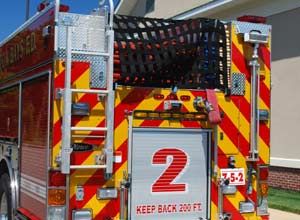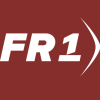As more and more fire apparatus are delivered across the country, we are seeing the result of the new reflective requirements that were included with the new NFPA 1901 Standard.
The results are the new striping that is appearing on the front, rear and sides of all new apparatus. Some fire departments have even taken a proactive approach, and have retrofitted existing vehicles to bring them up to the current standard.
Listed below are some of the NFPA requirements for your information. If you are currently in the process of writing specs for a new vehicle, then the manufacturer who builds your vehicle can steer you in the right direction. Check out NFPA 1901 for the full set of the standards.
Having seen these new reflective stripes on the rear of fire apparatus in the past several months, it can be hard to understand why there was such a long wait to enact such a standard.
Of course, there are many folks out there who do not like change, and also say that American fire apparatus has taken on a European flavor.
But from a safety standpoint, the striping on the rear of the vehicles really makes the rig stand out. If it saves some lives then it is well worth the added costs involved.
 |
.jpg) |
REFLECTIVE REQUIREMENTS FOR DOORS
14.1.6 Any door of the apparatus designed to allow persons to enter or exit the apparatus shall have at least 96 in.2 (62,000 mm2) of retro reflective material affixed to the inside of the door.
15.9.3.1 A retro reflective stripe(s) shall be affixed to at least 50 percent of the cab and body length on each side, excluding the pump panel areas, and at least 25 percent of the width of the front of the apparatus.
15.9.3.1.1 The stripe or combination of stripes shall be a minimum of 4 in. (100 mm) in total width.
15.9.3.1.2 The 4 in. (100 mm) wide stripe or combination of stripes shall be permitted to be interrupted by objects (i.e., receptacles, cracks between slats in roll up doors) provided the full stripe is seen as conspicuous when approaching the apparatus.
15.9.3.1.3 A graphic design shall be permitted to replace all or part of the required striping material if the design or combination thereof covers at least the same perimeter length(s) required by 15.9.3.1.
REFLECTIVE REQUIREMENTS FOR THE REAR OF THE VEHICLE
15.9.3.2 At least 50 percent of the rear-facing vertical surfaces, visible from the rear of the apparatus, excluding any pump panel areas not covered by a door, shall be equipped with retro reflective striping in a chevron pattern sloping downward and away from the centerline of the vehicle at an angle of 45 degrees.
15.9.3.2.1 Each stripe in the chevron shall be a single color alternating between red and yellow.
15.9.3.2.2 Each stripe shall be 6 in. (150 mm) in width.
15.9.3.3 All retro reflective materials required by 15.9.3.1 and 15.9.3.2 shall conform to the requirements of ASTM D 4956, Standard Specification for Retro reflective Sheeting for Traffic Control, Section 6.1.1 for Type I Sheeting.
15.9.3.3.1 All retro reflective materials used to satisfy the requirements of 15.9.3.1 that are colors not listed in ASTM D 4956, Section 6.1.1, shall have a minimum coefficient of retro reflection of 10 with observation angle of 0.2 degrees and entrance angle of −4 degrees.
15.9.3.3.3 Any printed or processed retro reflective film construction used to meet the requirements of 15.9.3.1 and 15.9.3.2 shall conform to the standards required of an integral colored film as specified in ASTM D 4956, Section 6.1.1.
REFLECTIVE REQUIREMENTS FOR OTHER PARTS OF THE VEHICLE
19.18.11 Where the design of the aerial device incorporates a knuckle, the knuckle shall be as follows: (1) Equipped with position lights or continuously illuminated by boom lights (2) Painted with reflective paint or provided with retro reflective Striping
19.21.4.3 All stabilizers that protrude beyond the body of the apparatus shall be striped or painted with retro reflective material so as to indicate a hazard or obstruction.



